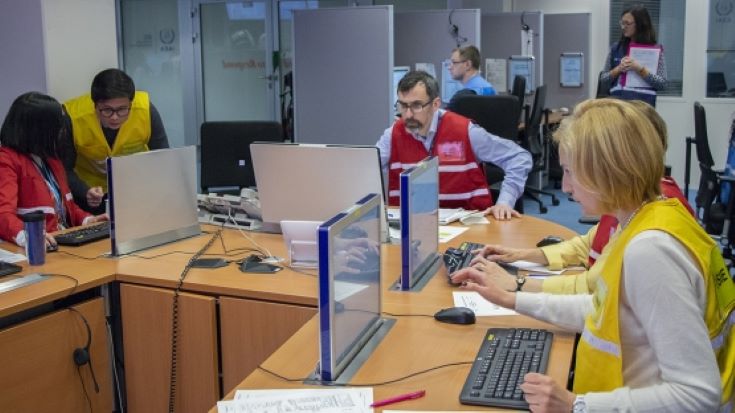International Atomic Energy Agency (IAEA) tests international capabilities for nuclear and radiological emergencies
The annual schedule of exercises set by the IAEA Incident and Emergency Centre is designed to test procedures to request or offer international assistance in the event of a nuclear or radiological emergency.
Kilian Smith, IAEA Response and Assistance Network (RANET) Officer, describes how the first exercise started with a trigger message. “From this point, participants practised their emergency response procedures, first notifying the IAEA of a simulated emergency situation. Then participants from some member states simulated requests for international assistance.” Other member states then simulated offers to address the requested assistance. “The exercise engages responders through emergency scenarios and identifies opportunities to improve their national emergency response procedures,” he explained.

IAEA Incident and Emergency System responders work during an exercise in the Incident and Emergency Centre, Vienna, Austria (Photo: M. Otarra/IAEA)
Over the three-day exercise, 17 separate emergency scenarios were created for each of 17 member states, which then requested emergency assistance. Each simulated assistance request sought complex and specialised support that had to be matched with simulated offers.
The member states, international organisations and the IAEA’s Secretariat worked to deliver the most effective assistance as swiftly as possible to emergency scenarios taking place across the globe. The IAEA then becomes the focal point to facilitate and coordinate international assistance when requests are made. In response to the requests, participants developed logistics to offer assistance and exchanged detailed assistance plans outlining their capabilities, including radiation survey, sampling and analysis, specialised monitoring and detection equipment, helicopters and medical support.
“These exercises can be challenging as they necessitate the creation and co-ordination of different accident scenarios for the participating member state,” explains Smith. “Fifteen responders within the IAEA Incident and Emergency System worked over the three days and nights to test our own capabilities effectively.”
More detail about the procedures being tested can be found in the newly revised IAEA Response and Assistance Network manual (EPR-RANET 2018).
An IAEA RANET Capacity Building Centre, designated in the Fukushima Prefecture in Japan, will host a similar exercise in June, 2019.
Kilian Smith, 23/04/2019